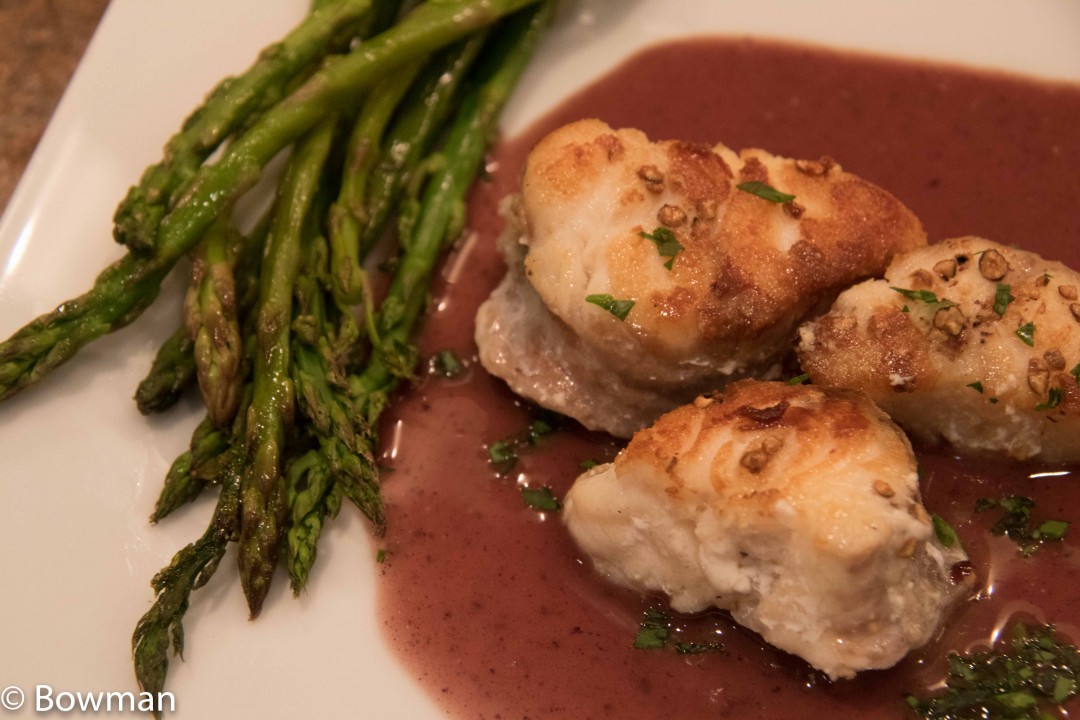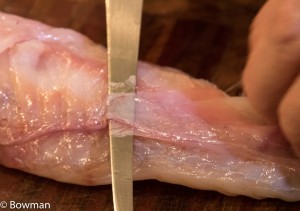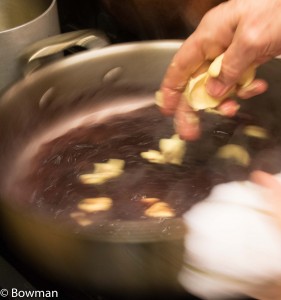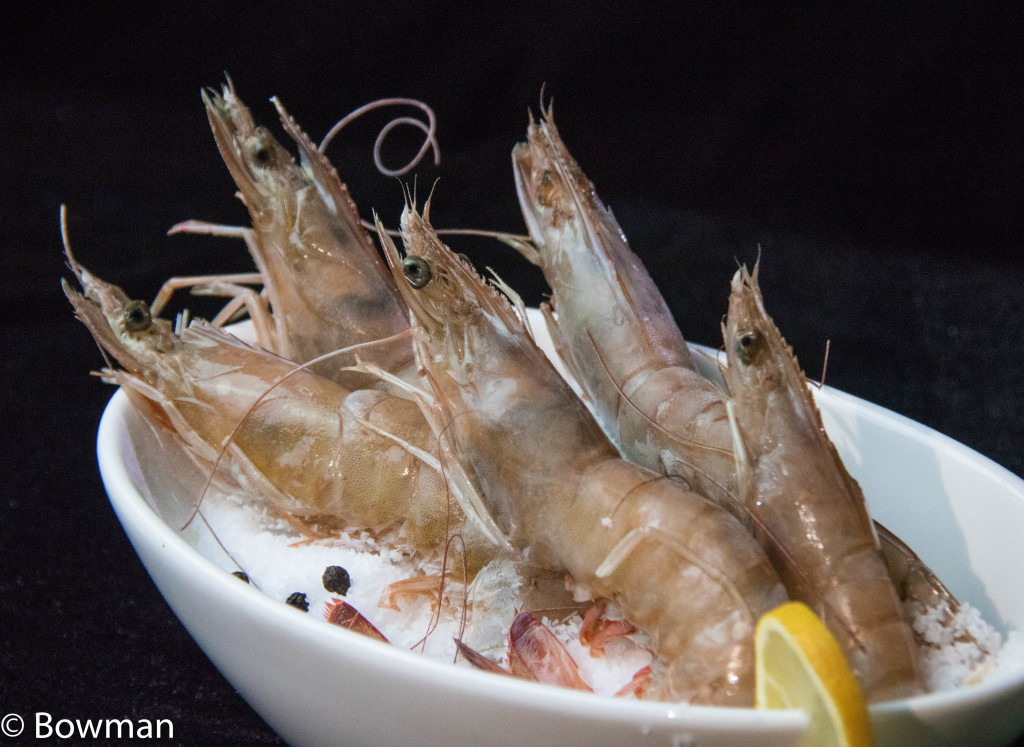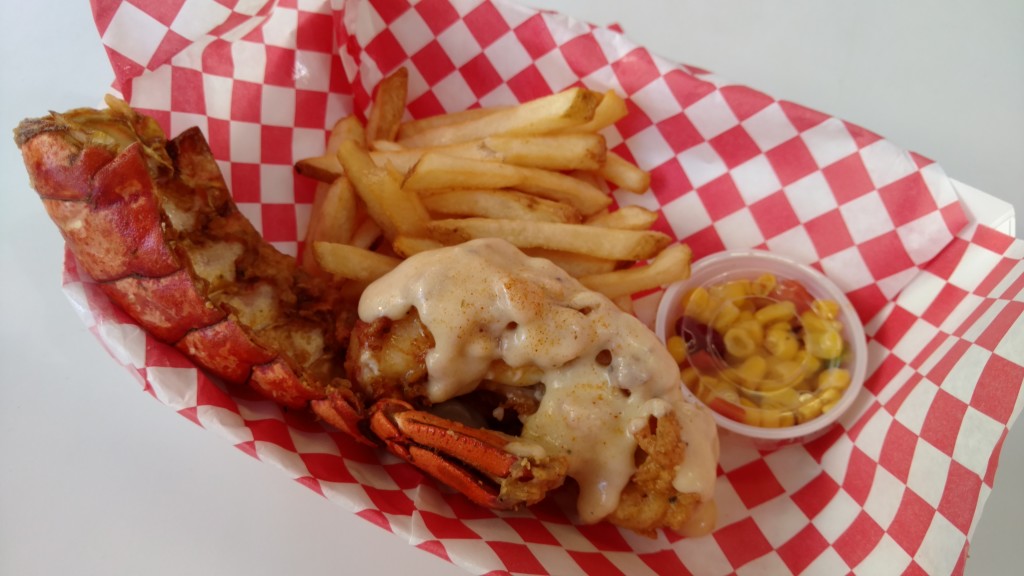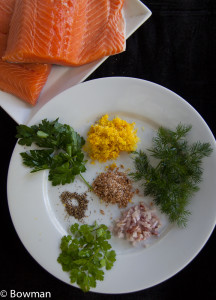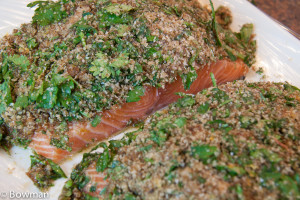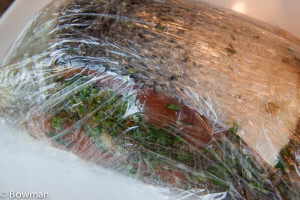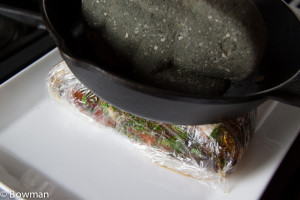 The idea for this blog began with cooking on a sailboat. My last trip was in May 2015. Here are some highlights of that trip.
The idea for this blog began with cooking on a sailboat. My last trip was in May 2015. Here are some highlights of that trip.
Several girlfriends and I chartered a 42-foot sailboat out of True Blue Bay in Grenada and sailed up through the Grenadines to St. Vincent and back. It was a windy, sun drenched, wild ride among verdant islands.
We left our spouses at home, wanting to test our knowledge and skills as sailors. We laughed a lot and held our breath as the 30-knot winds (about 35 mph) from the East slid up the windward side of the volcanic spines of the islands, then rushed down the valleys to slam into our boat, Chinook. The wind roared around the tips of the islands creating a mishmash of wind, tide and current. At one point we took pictures of the speedometer as Chinook approached hull speed (the top speed for the boat) with the main double-reefed. Each reef in the sail depowers the sail to make it easier to control the boat in high winds. It was grand.

The voyage of the Chinook – the first two weeks
My daughter and one of her best friends were on a big sailboat with me for the first time. Their eyes got a little large as we occasionally heeled over with the side rail near the water and as we sailed up and over 10 ft swells. They were great crew and no one was sick! Now, the true test is will they go with me again.

Chinook’s galley – a very small space!
With the winds (unusually high for that time of the year) staying between 20 and 30 knots for the first two weeks, it was almost impossible to use the grill. The galley (kitchen on a boat) stove had two burners, a small oven and a very good refrigerator – not always the case on a chartered boat. I had taken my bag of herbs and spices and Debbie, fabulous first mate, brought the sharp knives. Those, with a few favorite utensils that I carted along, made up my travel supplies. The list will be in my next blog.
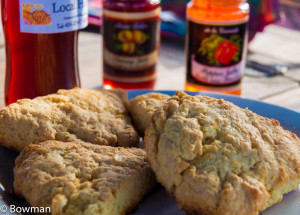
Scones still hot from the oven with Mama’s local honey, nutmeg jelly and pepper jelly.
The crew ‘s special breakfast treat.
The second week, a very experienced sailor, Stephanie, joined us at St. Vincent and the two girls flew back home. Debbie and I were thankful she joined us because we started hearing a strange thumping sound that she identified as the nut on the rudder about to fall off. Although we had a good assortment of tools, nothing was big enough for this job. We made an evacuation plan, putting the most essential items in three small dry bags (charts, compass, passports, money, credit cards, water, cell phones that worked everywhere, sun block …). Our charter company directed us to Union Island for repairs which was a few hours sail. Of course, a thunderstorm came up and pelted us with stinging drops as we came screaming into Clifton Harbor. We waited until the storm had passed and moored. Help came out immediately and fixed the boat.
Grenada is one of the “spice islands,” rich with nutmeg, bay, cinnamon and wonderful chocolate. I built my menus around fresh fish, great breads, luscious seasonal fruit and chocolate. The Grenadian nutmeg chocolate is a special favorite of mine. We made a nutmeg chocolate souffle with only three ingredient that is super easy. The recipe is coming in a post soon.
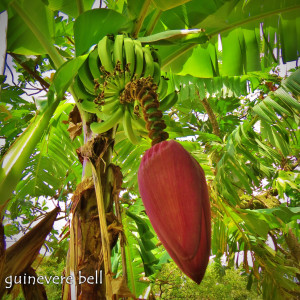
photo by Guinevere Bell
Cacao pod: where chocolate comes from
Grenada and Bequia had the best stores for provisioning and had most of what we wanted. On Union Island we bought freshly caught tuna.
Before these trips I eagerly anticipate the surprises we find each time we charter in a new place. I never have any idea what I’ll find (or not be able to find), which is always the greatest challenge for the cook on the boat. What surprised me on this trip was a glorious variety of fruits, including mango, papaya, pineapple, pears and wonderful tomatoes!
The biggest culinary surprise was the bread: freshly made loaves on several islands and baguettes and croissants that were flaky and buttery on Bequia.
Not finding on Grenada the main ingredient for that quintessential summer drink, the Pimms Cup, we had a treasure hunt for Pimms No. 1, a British gin-based liqueur, at every port of call. We finally discover a half bottle behind the bar at Lourdis on the island of Carriacou in Hamilton Bay. While there we also found that the jerk chicken at Lourdis will scald your mouth – but is delicious!
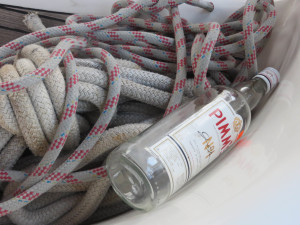
photo by Sebastian Duffell
THE BEST FOOD we had was in the Tobago Cays, a National Marine Park in the middle of the Grenadines. Most people call the Tobago Cays the jewels of the Grenadines. The Cays are three very small islands with miles of reefs and a turtle sanctuary, which makes this an excellent area for snorkeling and diving. The tiny pristine islands have white beaches, big lizards, and lots of birds. We saw scores of small brilliant reef fish, enough starfish to light the heavens, and rays and turtles of all sizes.
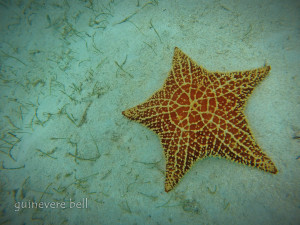
photo by Guinevere Bell
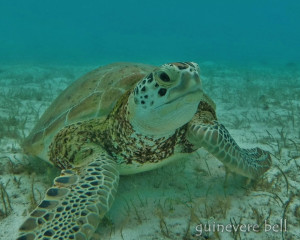
photo by Guinevere Bell
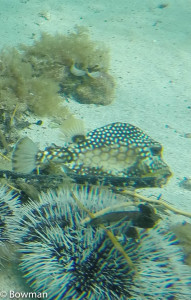
photo by Sebastian Duffell
As we sailed into the narrow entrance to the cays, we were greeted by a floating concierge fleet, with men in small, brightly-colored motor boats offering mooring help, various provisions and “beach barbeques.” The men in the boats go by monikers. Our charter company had said to look for Romeo but we did not find him. Instead, Lady Luck was with us and Kojak offered us help mooring (by then, the wind had freshened and I wanted a mooring ball for one night). We accepted his help and his offer to have a lobster barbeque on the beach. This was the last day of the lobster season, we were not going to pass that up. The beach cooks share several large tents which cover grills. Regardless of who was cooking for you, you shared six or seven picnic tables. That day in May (which is low season), we were only one of four groups having dinner. I can’t imagine the pandemonium this place must be in during the high season with 30 or more boats moored and countless guys offering their wares and their help!
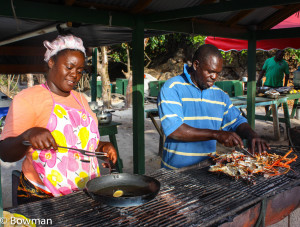
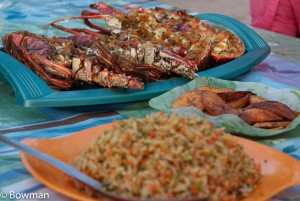
That evening was perfection, with the sun setting, the beach glistening white, the beer cold, the rum punch strong, and the smell of grilled lobster beyond enticing. Kojak and his wife prepared a feast to make your heart stop with buttery grilled lobster, fried plantain, rice and potatoes. The dessert, banana bread, was one of the best I’ve ever had. It was truly a dinner to match the magnificent scenery. They fixed dinner for us again on our return trip, but instead of lobster, we had fish and tender conch, which rivaled the lobster – and that’s saying a lot for conch!
The third week of our adventure my dear friend, chef and sailor Audrey and her son Sebastian, joined me. As a young woman, Audrey had sailed across the Atlantic and lived on Palm Island, sailing charters for her father. It’s a small world and many of the people she knew were still legends in the area.
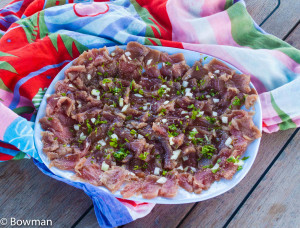
Audrey’s tuna sashimi
The wind dropped to its normal range of 10 to 15 knots for this last leg of the journey. With Audrey aboard we feasted every day. Look back at the picture of the galley. Audrey would take one burner and I the other fixing sautéed vegetables and pan seared pork in a rum sauce.
THE MOST UNUSUAL FOOD we had was a mangrove oyster.
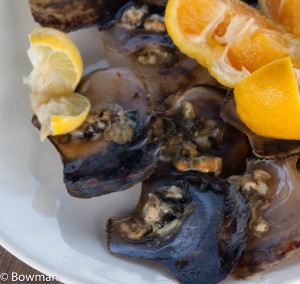
Mangrove oyster
In Tyrell Bay on Carriacou, the site of the customs office, a man called Warrior paddled a small rowboat up to our boat.
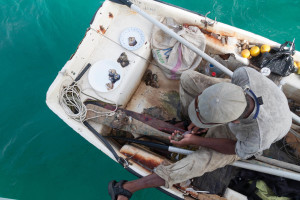
Most of what he had we did not need. Then he asked me if I’d ever tried mangrove oysters. I had never heard of them. Early the next morning he brought several dozen mangrove oysters for us to try. They are small briny bivalves with a tart buttery flavor.
THE BEST ISLAND for traipsing around and shopping on was Bequia, a funky island with a corniche for strolling that offers interesting art shops, a dive shop and several good restaurants. Just a short walk away from the water are artists’ galleries and workshops worth the walk.
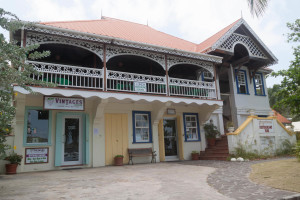
Doris’ is a great place for provisioning. It’s on a back street and is easy to miss. She offers many goods from the US and England, a good wine selection, interesting canned goods if you are homesick, as well as fruits, fresh vegetables and frozen foods in the back. I bought frozen chocolate croissants to surprise the crew for breakfast since the bakery was only open on Mondays during the slow season.
Grenada and the Grenadines are beautiful islands which are well worth the trip, whether you’re sailing there or just visiting. Recipes from some of our great meals will be coming soon.
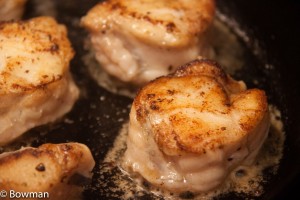 For something a little more elegant, my friend Audrey showed me how she made Monkfish in a Beurre Rouge sauce for the Garden Restaurant in Philadelphia. You may be more familiar with a beurre blanc sauce, which is a classic French sauce made from butter, white wine, shallots and a touch of vinegar. A beurre rouge is made with red wine, which gives the sauce a slight tang and a beautiful rich ruby port color.
For something a little more elegant, my friend Audrey showed me how she made Monkfish in a Beurre Rouge sauce for the Garden Restaurant in Philadelphia. You may be more familiar with a beurre blanc sauce, which is a classic French sauce made from butter, white wine, shallots and a touch of vinegar. A beurre rouge is made with red wine, which gives the sauce a slight tang and a beautiful rich ruby port color.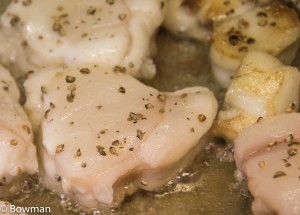 when you should start to think about turning them to brown evenly on the other side.
when you should start to think about turning them to brown evenly on the other side.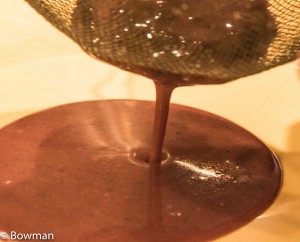 Warm your dinner plates for a minute in the microwave. Pour some of the beurre rouge onto each plate. Place the monkfish in the middle. Now you have an elegant, beautifully presented dinner that is quick to make and delightful to eat.
Warm your dinner plates for a minute in the microwave. Pour some of the beurre rouge onto each plate. Place the monkfish in the middle. Now you have an elegant, beautifully presented dinner that is quick to make and delightful to eat.
